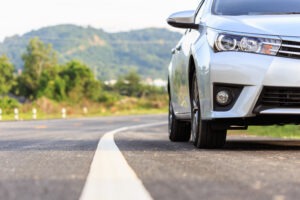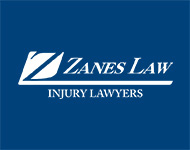![]() Contact Us 866-499-8989
Contact Us 866-499-8989
Can I Prove the Car Was Following Too Close in a Car Accident?
- Video Footage Proving That the Car Was Following Too Close in a Car Accident
- Eyewitness Account That the Car Was Following Too Close in a Car Accident
- Party Admission That the Car Was Following Too Close in a Car Accident
- Your Injuries as Proof That the Car Was Following Too Close in a Car Accident
- A Car Accident Lawyer Will Help You Prove That the Car Was Following Too Close in a Car Accident
- Home
- FAQs
- Car Accidents
- Can I Prove the Car Was Following Too Close in a Car Accident?
You can prove that the trailing vehicle was following too closely, thereby causing the rear-end collision you experienced, in a few ways, as detailed here.
Video Footage Proving That the Car Was Following Too Close in a Car Accident
Perhaps a passenger in your car or someone in another motor vehicle had the foresight to start recording video of the trailing vehicle before it struck your car. Maybe someone’s dash cam caught the negligent driving. Or it is possible you happened to pass by a bank ATM, gas station, or other business with a working surveillance camera that captured video of the driver following you too closely.
Also, consider that some busy intersections sport video cameras. The video may not be high-resolution, but it could be enough to detect the distance between two cars. Videos serve as excellent forms of proof because they are not subject to potential bias, inaccurate recollection of events, fading memories, or any of the other human-errors that accompany a witness’ statement or testimony.
For a free legal consultation, call 866-499-8989
Eyewitness Account That the Car Was Following Too Close in a Car Accident
If other drivers were on the road at the time of your accident, chances are someone spotted the trailing driver’s negligent driving, even before he or she rear-ended your car. The trick is how to track down those witnesses. Here are some tips:
- If a witness stopped to offer information to the law enforcement officer after your accident, you are well ahead of the game. You can get witnesses’ contact information from the police report and call upon them to make a statement or to testify in court.
- These days, particularly if the accident happens on a highway or busy road, other motorists who witness the accident tend to call 911 to report it. These accounts might be available to you in proving that the trailing car was following too closely, ultimately causing your car accident. Call your police department to find out.
- It is true that passengers have the best vantage point for how an accident occurred; however, they are considered less credible because of their relationships with the drivers. Other drivers and pedestrians make strong candidates, but if you did not get their statements or contact information at the scene of the accident, you will have a tough time tracking them down days later.
- One often overlooked method for finding eyewitnesses is to canvas the scene of the accident at the same time of day, maybe even the day of the week, that your accident happened. Perhaps the people waiting for a bus were also there when your collision occurred. Maybe you spot a diner at the intersection where a waitress might have spotted the tailgating and/or the accident.
- The human search engine can prove quite useful in finding additional witnesses. Once you find one witness, chances are he or she can point you in the direction of someone else who witnessed the accident.
Party Admission That the Car Was Following Too Close in a Car Accident
Sometimes, the negligent driver in a car accident will hop out of his or her vehicle and run over to you, apologizing for his or her negligent driving. In this case of a rear-end collision, the driver might say he or she is sorry for following too closely and rear-ending your vehicle.
Believe it or not, this “party admission” is admissible in court. One might think that the statement would count as hearsay because the comment was made outside of the courtroom. However, because the defendant made it against the defendant, the Federal Rules of Evidence classify such statements as “nonhearsay.”
Click to contact our personal injury lawyers today
Your Injuries as Proof That the Car Was Following Too Close in a Car Accident
Some people might tell you that the injuries you sustained in your car accident can prove that the trailing vehicle was following too closely. However, although your injuries (whiplash, for example) can substantiate that you were rear-ended by another vehicle, they do not offer proof of how or why the collision happened.
You have probably heard the general rule that when you are rear-ended by another motor vehicle, the trailing vehicle automatically takes the blame. While this is often the case, some exceptions can lead to the leading vehicle’s driver to be at fault.
For this reason, proving that the trailing driver was at fault for the collision is critical. Without some degree of proof that he or she was negligent, you will not be able to establish fault and, consequently, liability for the recovery of your damages.
Complete a Free Case Evaluation form now
A Car Accident Lawyer Will Help You Prove That the Car Was Following Too Close in a Car Accident
Zanes Law’s car accident legal team knows where to look and how to get the evidence you need to prove that the driver who rear-ended you was negligent, at-fault, and liable for your car accident and your injuries. We will do everything from A to Z to see that you are compensated. Call us today at 866-499-8989.
Call or text 866-499-8989 or complete a
Free Case Evaluation form
 Why Bruce Jenner’s Accident is a Lesson for ALL Drivers Out There
Why Bruce Jenner’s Accident is a Lesson for ALL Drivers Out There Every media outlet has a scope on the recent and fatal Bruce Jenner car crash. Many accounts have recalled the incident in varying detail but none look promising for any party involved including the
 Phoenix Light Rail Crash
Phoenix Light Rail Crash A very major and scary crash recently closed down a major Central and Indian School Road intersection. Although the crash has long been cleared since Saturday, the collision between a
 Tracy Morgan Lawsuit Finally Settles
Tracy Morgan Lawsuit Finally Settles Many fans of the famous (now ended) sitcom, 30 Rock, anxiously followed the news after beloved actor and comedian Tracy Morgan was involved in a trucking accident. A Walmart tractor-trailer
 And Then It Happens To You… A Car Accident.
And Then It Happens To You… A Car Accident. An accident victim who was injured in a car accident in Tucson, Arizona describes her experience in this guest post. You hear about them all the time. You have even witnessed some right in
Tell us what happened…
Receive a Free, No-Obligation, Case Evaluation Now
